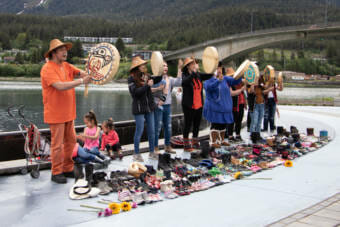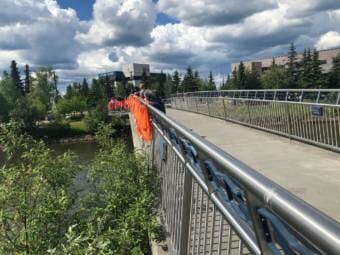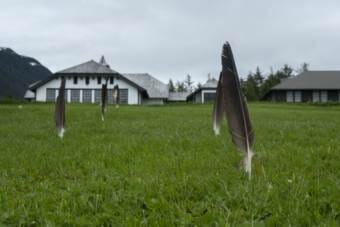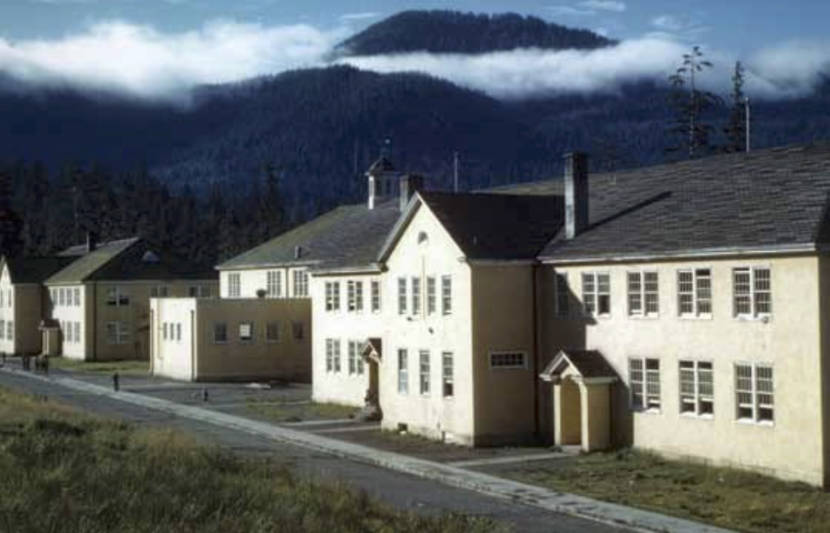
The recent discovery of the remains of hundreds of Indigenous children at a residential school in Canada has prompted discussion, grief and memories of past trauma in Alaska. Thousands of Alaska Native children were sent to boarding schools in and outside the state. The effects of forced assimilation continue to impact the lives of Native people.
Cultural expert Paul Ongtooguk and two boarding school survivors, Jim Aqpayuk LaBelle and Fred John Jr., shared their perspectives with Talk of Alaska on the legacy of boarding schools in Alaska.
Here are some highlights of what they shared, edited for length and clarity.
Paul Ongtooguk, former director of UAF’s Alaska Native Studies Department, on the origin of U.S. boarding school policy as labor development
In the early era, one of the strategies that were developed was to end the Indian Wars by ending Indianness. One of the venues for doing that was missionaries — converting people not only to Christianity but away from being Indian. That was not completely successful.
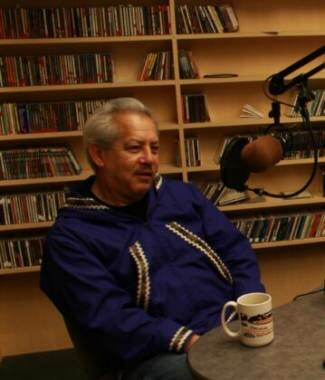
In the summertime, the students were essentially loaned out or sold, leased to members of the white community to serve as labor servants or maids, whatever manual labor that was available for them. So there was a very high attrition rate. There was a very high number of students who died from probably the geographic shift, probably from the population shift and from loneliness, from abuse and from malnutrition. There were also multiple reasons for accidents, given the kind of labor that they were involved in — this was all pre-OSHA.
Boarding school survivor Jim Aqpayuk LaBelle on his memories of being sent to the Wrangell Institute
My mother took us to the airport and our mom in Fairbanks left my younger brother and me there at the hands of the BIA officials. The first thing that they did was they tied us together with other children with ropes at the Fairbanks airport. There were dozens of other children that were already tied there.
I remember this so well, even though it happened 67 years ago. I can still recall some of the younger children as young as five were there. I was eight, my brother was six and we were thrust into just an alien situation where there was a lot of barking of orders. We were given yellow name tags to affix to our clothing that had our names or destination written on it, that kind of thing. And then it took almost a half a day sometimes longer, to get to Wrangell.
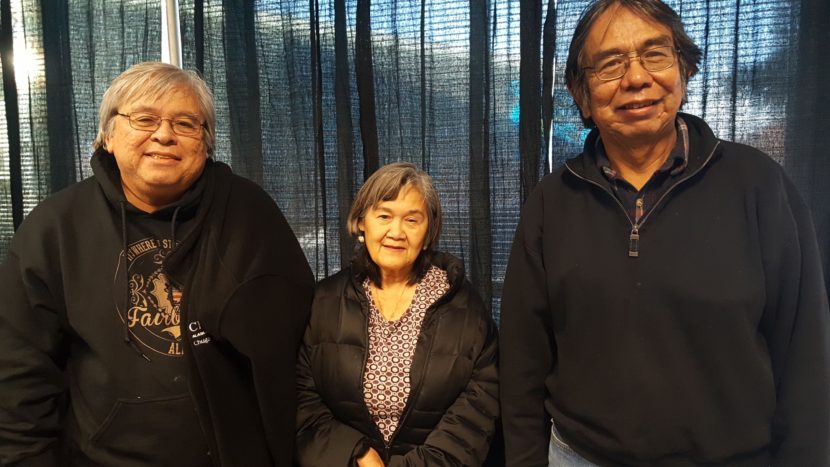
The first thing they had us do was to strip completely naked on this receiving room concrete floor. A lot of children did not understand the commands that the directions and oftentimes in frustration a lot of matrons ran over to these little guys and just kind of ripped their clothing off.
We were all told to get in a line to get her haircuts. These were done in a way that was kind of like being sheared — ever see these videos of sheep being sheared off? Well that’s what happened to us.
We were given clothing. The government issued clothing with our numbers. Our number was on our clothing and on our bedding. Children who had difficult names were often referred to only by their number by many matrons. And I can still remember years later as children who were much older, saying “I thought my name was my number.”
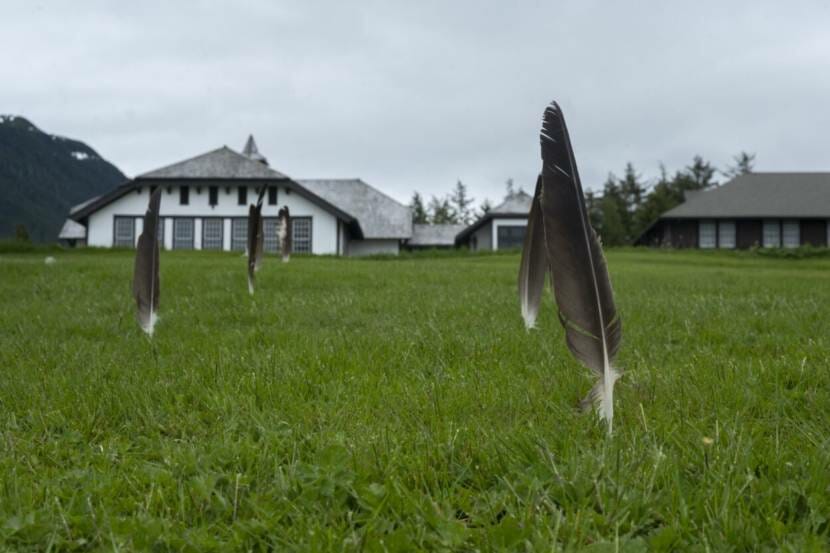
Fred John Jr. on the punishment given at Wrangell Institute
My younger sister was five and I was seven when we went. We were there almost seven years.
It was like a military thing…If we do the smallest thing we would get punished. Like our coat be on the floor, or if we were late getting up. On Saturday morning the big kids would line up for spanking with their pants would be around their knees in the barbershop. They get I think 12 swats, I don’t remember now. But it was lots.
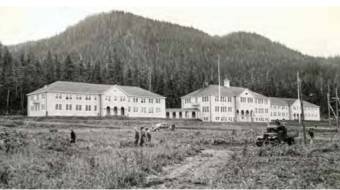
The big kids wouldn’t cry. But as little ones, we get the same amount of spankings and we are all lined up beside them. The big ones could get spanking before the smaller ones. But we’d be crying before when we saw the big guys get their spanking and we watch them.
When it was our turn, the only good thing about that is the big boys could take our place if they wanted to — a lot of them did. They took their second spanking. My brothers would take two spankings for me.
Another one is the gauntlet. They’d strip us down if we behaved like what they call really bad, if we were bad boys. And they would have two lines to line up and down beside the beds. And the guys that tattletale were standing on a bed and watch the whole thing. The boy — they stripped them down naked and let them run down through the complex. The boys on both sides pulled their belt out and hit them with the hard end — the buckle end as he ran. Sometimes they fall down and cry and everything and they’d be really beat up by time they make it to the end.
Whoever don’t hit hard would be stripped down and then run down the gauntlet.
Even though I don’t want to, I even hit my friends. Luke Titus was one of them, my friend from Minto. He was one of them that I ran down that thing and I hit him hard. And he did the same to me. About 60 some years later, we met in Old Minto Recovery Camp. We apologized to each other for hitting each other. We didn’t — we didn’t have any choice.
Paul Ongtooguk on the whether the government has apologized for its role in boarding schools
The short answer is no, nothing that I’m aware of. There have been individual communities that have apologized for their role. Some of the churches have apologized for the role that their boarding schools have played in this, but it’s been very uneven. And there’s certainly nothing on the federal or state level that represents a formal apology or compensation.
Fred John Jr. on how he started telling his story
I got four girls and a son. And I didn’t really talk to them for years. I never talked about my boarding school experience probably for about 15 years. I kept a wall around me — an imaginary wall so I wouldn’t ever get hurt again. So I never talked about it.
I became an alcoholic. My family kept me together. And when I came back from recovery camp, I told my story there the first time, my whole life story, and it took about three weeks before I start feeling this freedom of telling my story. My kids, they cared about my story. And they know my experience and everything.
People ask me what do you tell your children, I tell them, forgive us. Forgive us for not learning how to make sleds. Forgive us for not making snowshoes and boats and canoes, and all those things that our uncle and our aunties taught us.
Lex Treinen contributed to this report.

